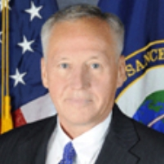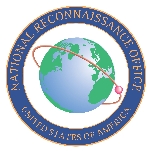Officials
Back to Officials


Offical

Name: Carlson, Bruce
Current Position: Previous Director
A retired general from the U.S. Air Force, Bruce Allen Carlson began serving as the director of the National Reconnaissance Office (NRO) in June 2009. The NRO is in charge of launching and maintaining the nation’s spy satellites. Carlson had no background in intelligence or space, but was brought on to lead the budget-troubled NRO because he was a logistics and acquisition specialist. On April 18, 2012, Carlson announced his resignation effective July 20.
Born March 5, 1949, in Hibbing, Minnesota, Carlson moved with his family to Brainerd, Minnesota, in 1964. His father, Clifford Carlson, had retired from the Army and worked in the forest service.
Upon graduation from high school, Carlson attended junior college in Brainerd while planning to become an accountant. After his second year, he applied for financial aid at the University of Minnesota, Duluth, but was ineligible because his junior college was non-accredited. He turned the ROTC program for help, but they didn’t provide financial aid either. However, they did send him to a summer camp where he was given a ride in a T-33 jet that was designed to train air force pilots. He immediately lost interest in becoming an accountant and decided to become a fighter pilot. However, he did complete his accountancy degree, graduating in 1971.
Having also completed Duluth’s Air Force ROTC program, Carlson was commissioned a second lieutenant.
He completed his undergraduate pilot training at Vance AFB in Oklahoma. At Vance, Carlson was warned that he would not succeed if he did not meet for drinks once a week at the officers club. Because his Mormon beliefs rejecting drinking and smoking, Carlson declined.
His next stop was to train for the F-4 fighter at Homestead AFB in Florida. In May 1973, Carlson was assigned to the 417th Tactical Fighter Squadron at Holloman AFB in New Mexico.
The following year he was transferred to Thailand to serve as a forward air controller and instructor pilot with the 23rd Tactical Air Support Squadron at the Nakhon Phanom Royal Thai Air Force Base.
After being promoted to captain, Carlson returned to the states in October 1975 to be an OV-10 instructor pilot and flight examiner for the 23rd Tactical Air Support Squadron at Bergstrom AFB. Two years later he was an A-10 pilot and fighter weapons instructor pilot with the 355th Tactical Fighter Squadron at Myrtle Beach AFB in South Carolina.
He studied at the Air Force Fighter Weapons School at Nellis Air Force Base in Nevada (1979) and earned a Master of Arts from St. Louis-based Webster University in 1980.
In May 1980, Carlson was made aide to General Bill Creech, the commander of Headquarters Tactical Air Command at Langley AFB in Virginia. Because Creech asked Carlson to sit in on all briefings and meetings, Carlson credits Creech with teaching him how to run a large organization.
As a major Carlson served as wing weapons officer for the 363rd Tactical Fighter Wing and operations officer for the 17th Tactical Fighter Squadron at Shaw AFB in South Carolina.
For three years he was tactical systems requirements officer in the Office of Low Observables Technology, Office of the Secretary of the Air Force, in Washington, DC.
Having been promoted to lieutenant colonel, Carlson attended the Naval War College from July 1988 to June 1989, before becoming director of advanced programs, Headquarters TAC, at Langley AFB.
During the 1990s—when he rose to colonel, then brigadier general and then major general—Carlson was vice commander of the 366th Wing, Mountain Home AFB, Idaho (1991-1993); senior military assistant to the Undersecretary of Defense for Acquisition and senior military assistant to the Deputy Secretary of Defense at the Pentagon; commander of the 49th Fighter Wing (the first stealth fighter wing) at Holloman AFB in New Mexico; and director of global power programs, Office of the Assistant Secretary of the Air Force for Acquisition, and later director of operational requirements, Deputy Chief of Staff for Air and Space Operations, Air Force headquarters, in Washington, DC.
From January 2000 to May 2002, Carlson was director for force structure, resources and assessment (J-8) for the Joint Staff in Washington, DC. During this time he was promoted to lieutenant general.
After that he commanded the 8th Air Force stationed at Barksdale AFB in Louisiana until April 2005, at which time he also became the joint functional component commander for space and global strike at U.S. Strategic Command, Offutt AFB in Nebraska.
His last Air Force command, beginning in August 2005, placed him in charge of materiel command, located at Wright-Patterson AFMC in Ohio, overseeing development and purchasing of all Air Force technologies, except space systems, with a $59 billion budget and a staff of 74,000. During his stint with AFMC, there was controversy involving the competition between Boeing and Northrop Grumman/EADS North America over the bidding to build a new Air Force refueling tanker. A $1.5 billion contract with Northrop Grumman was later cancelled.
Carlson retired from the Air Force as a four-star general on January 1, 2009, after more than 37 years of service. After retirement, Carlson joined the board of directors of EADS North America before taking over the National Reconnaissance Office.
As a pilot, Carlson logged more than 3,300 flying hours in ten different kinds of aircraft, although his favorite was the F-16
Carlson met his wife, Vicki, in high school. Honoring her parents’ request, he did not propose marriage to her until she graduated high school. At one minute after midnight that day, they became engaged. They married in June 1970 when he was 20 years old she was 19. The Carlsons have two sons and a daughter and nine grandchildren.
Bruce A. Carlson Biography (National Reconnaissance Office)
Bruce A. Carlson (Wikipedia)
- Latest News
- D.C. Public Schools will Teach all Second-Graders to Ride a Bike
- New Rule in Germany Limits Sales of Sex-Themed E-Books to 10pm to 6am
- What Happened to the 6-Year-Old Tibetan Boy the Chinese Government Kidnapped 20 Years Ago?
- U.S. Ambassador to Turkey Photoshops his Hair Color to Mock Turkish Mayor
- Mystery Artist Calls Attention to Unfixed Potholes by Drawing Penises around Them





